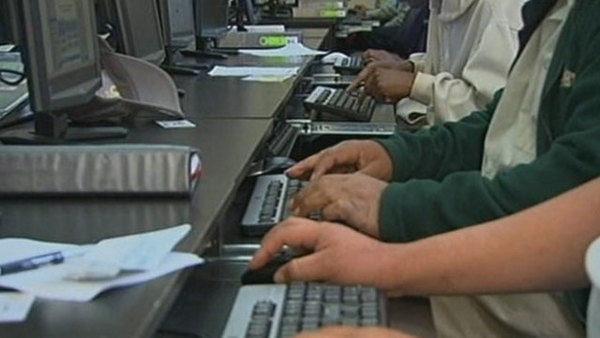WASHINGTON (AP) — U.S. employers slowed their hiring in August after two blockbuster months and barely raised their workers’ pay, a pullback that may lead the Federal Reserve to leave interest rates alone until late this year.
But several surveys suggest that Americans are growing more optimistic about the job market, a trend that could boost spending and energize the economy in coming months.
Employers added 151,000 jobs in August, a modest gain after an increase of 275,000 in July, the most in eight months, and 271,000 in June. The unemployment rate remained at 4.9 percent for a third straight month, the Labor Department reported Friday.
Federal Reserve Chair Janet Yellen and other Fed officials highlighted the economy’s improvement at a conference last month. Vice Chair Stanley Fischer suggested that the job market was close to full health, an assessment that typically might prompt a rate hike.
Yet the August job figures may lead the Fed to hold off at its next meeting, Sept. 20-21, and await further economic data. Investors foresee only a 21 percent chance of a rate increase this month, according to futures markets, down from 24 percent on Thursday.
The Fed held its benchmark short-term rate at a record low near zero for seven years to support the economy after the financial crisis erupted in 2008. Its policymakers raised their key rate modestly in December but have stood pat since. Lower rates can encourage more borrowing and spending and thereby stimulate the economy.
Stock investors seemed pleased that Friday’s modest jobs data might have lessened the likelihood of a September Fed rate increase. Higher borrowing rates tend to weigh down stock prices. The Dow Jones industrial average closed up about 73 points.
If a relatively tepid pace of hiring keeps the Fed on the sidelines, the continuation of ultra-low rates could sustain growth, some analysts suggested.
“This is a healthy thing if the (job) gains slow down a little bit, because that reduces the risk that the Fed will quickly raise rates and choke off the expansion,” said Josh Wright, chief economist at iCIMS, a recruitment software company and former Fed staffer.
Still, modest hiring means it could take longer to fully heal the scars of the Great Recession. The proportion of Americans who are either working or looking for work has been flat for about two years but is still near a 40-year low.
The nation’s 4.9 percent unemployment rate also remains low. A broader barometer, which counts not only the officially unemployed but also part-time workers who want full-time work and people who have given up their job hunts, is 9.7 percent. That’s down from a peak of 17.4 percent in 2009, just after the recession ended.
The steady hiring of the past six years appears to be imbuing Americans with a brighter outlook, a shift from the widespread gloom that long persisted even as the economy grew.
The Conference Board’s consumer confidence survey this month found that the percentage of Americans who consider jobs “plentiful” has reached a nine-year high. And overall confidence has touched an 11-month high.
In addition, a survey released Friday by Rutgers University showed that Americans are more confident that they could find a job if necessary than they were two years ago.
Nearly 70 percent of respondents said they are very or somewhat confident they could land another good job. That figure barely rose in the first four years of the recovery but is now up from 53 percent in 2014.
“It’s the best news from an attitude standpoint that we’ve seen in our workforce since the recession began,” said Carl Van Horn, director of the Heldrich Center for Workforce Development at Rutgers. “As people become more confident, they will probably spend more.”
A Gallup survey released last month reported that the percentage of Americans who say their employers are hiring has reached the highest level since Gallup began asking the question in 2008.
Still, worker pay hasn’t accelerated nearly as much as in previous economic recoveries. Average hourly wages barely rose in August and has increased just 2.4 percent over the past 12 months.
That figure masks wide variations among industries and occupations. Recruiting firm Robert Half estimates that pay will grow much faster next year for in-demand technology professionals. Starting salaries should jump 6.4 percent for data scientists, 6.2 percent for web developers and 5.7 percent for network security engineers, the firm estimates based on surveys of its clients.
Pay has lagged in the past year for shipping and warehouse workers, retail employees and factory workers, according to government data. But pay is rising for some lower-paying jobs, particularly at restaurants.
Scott Gittrich, CEO and Founder of Toppers Pizza, said his company has become so desperate to attract drivers in some cities that they’ve increased pay up to 15 percent. The company has 76 restaurants in 13 states and plans to open eight more within six months.
“Wages are getting pressured across the board,” Gittrich said. “We’re paying above minimums in most markets.”
Copyright 2024 The Associated Press. All rights reserved. This material may not be published, broadcast, rewritten or redistributed.

